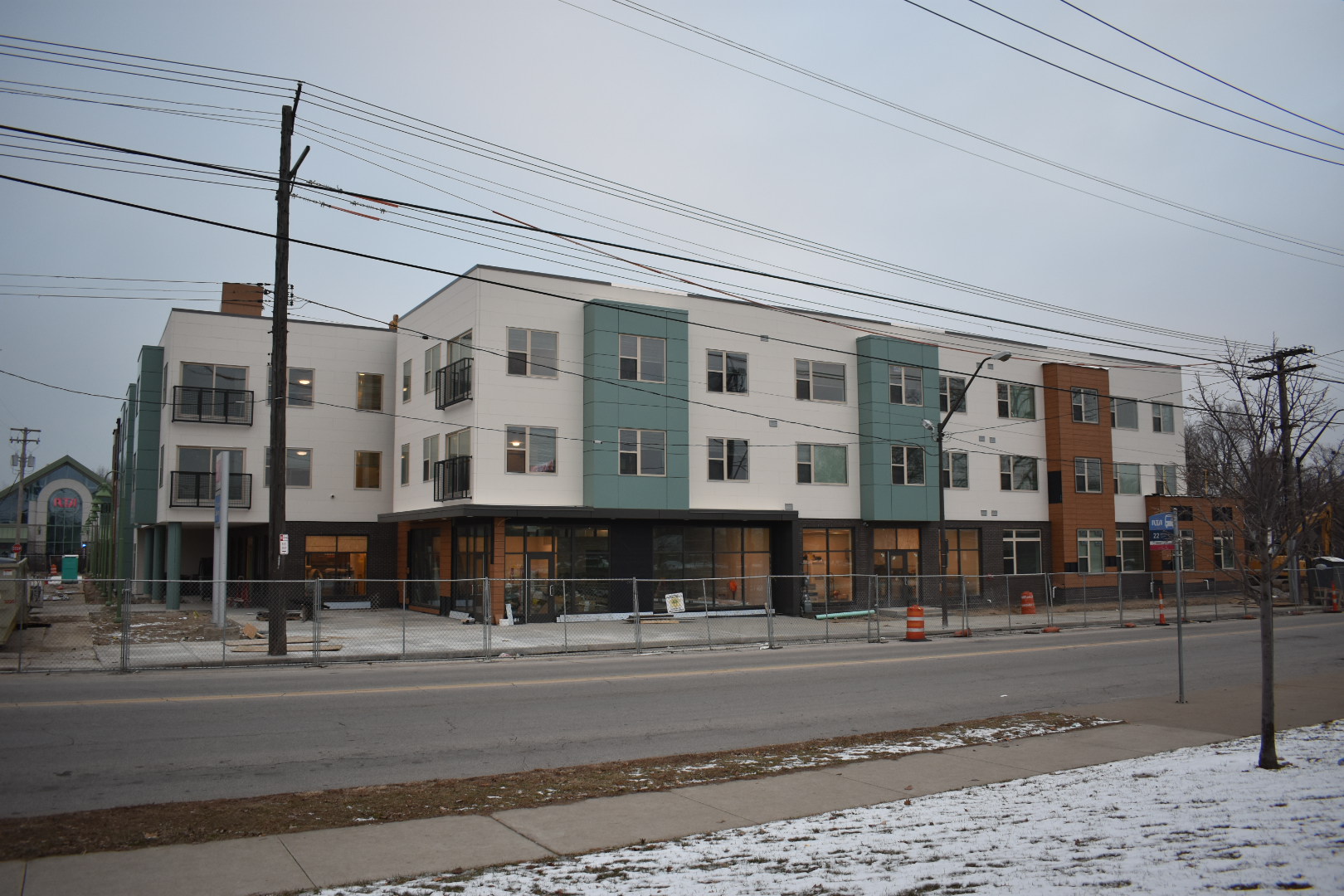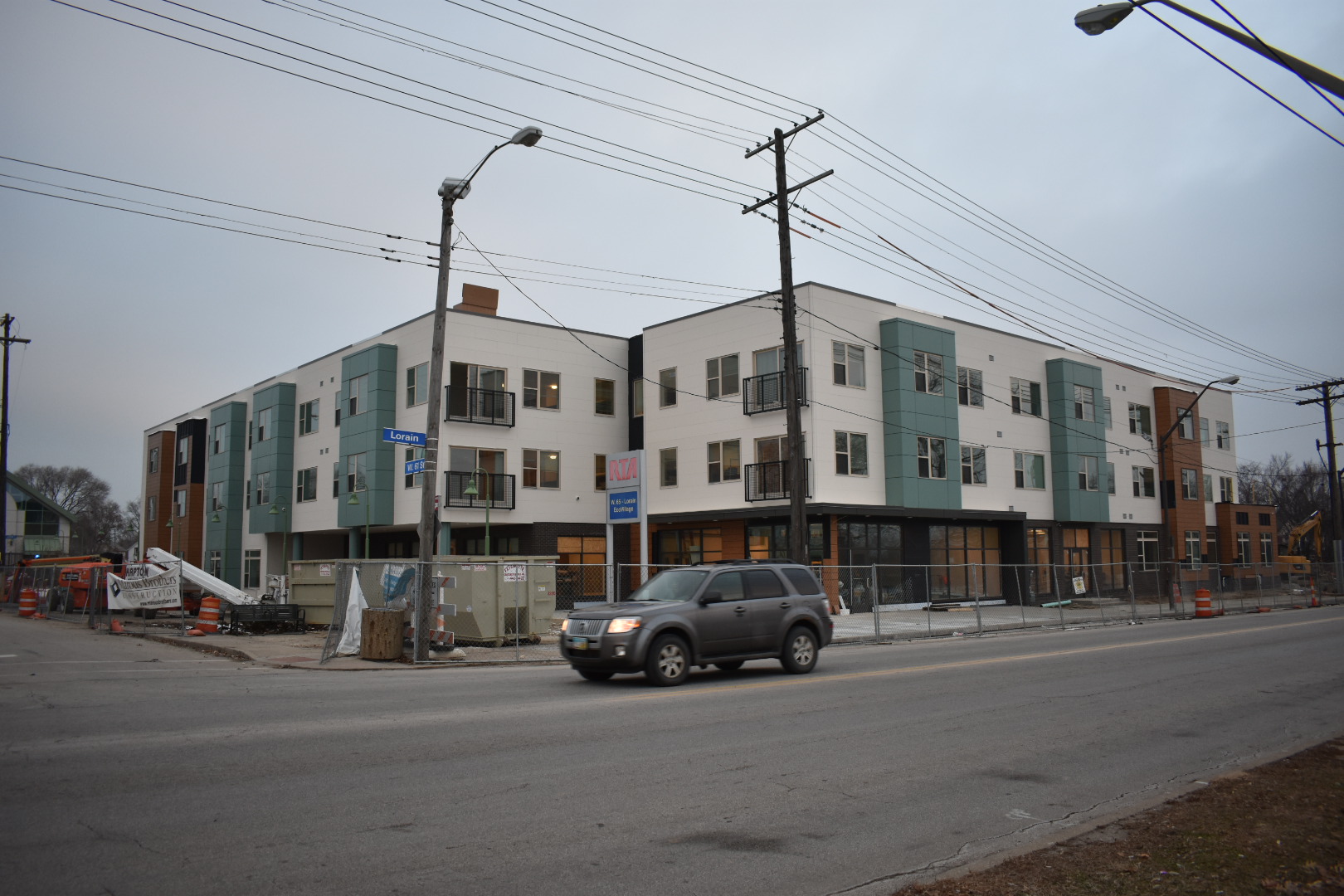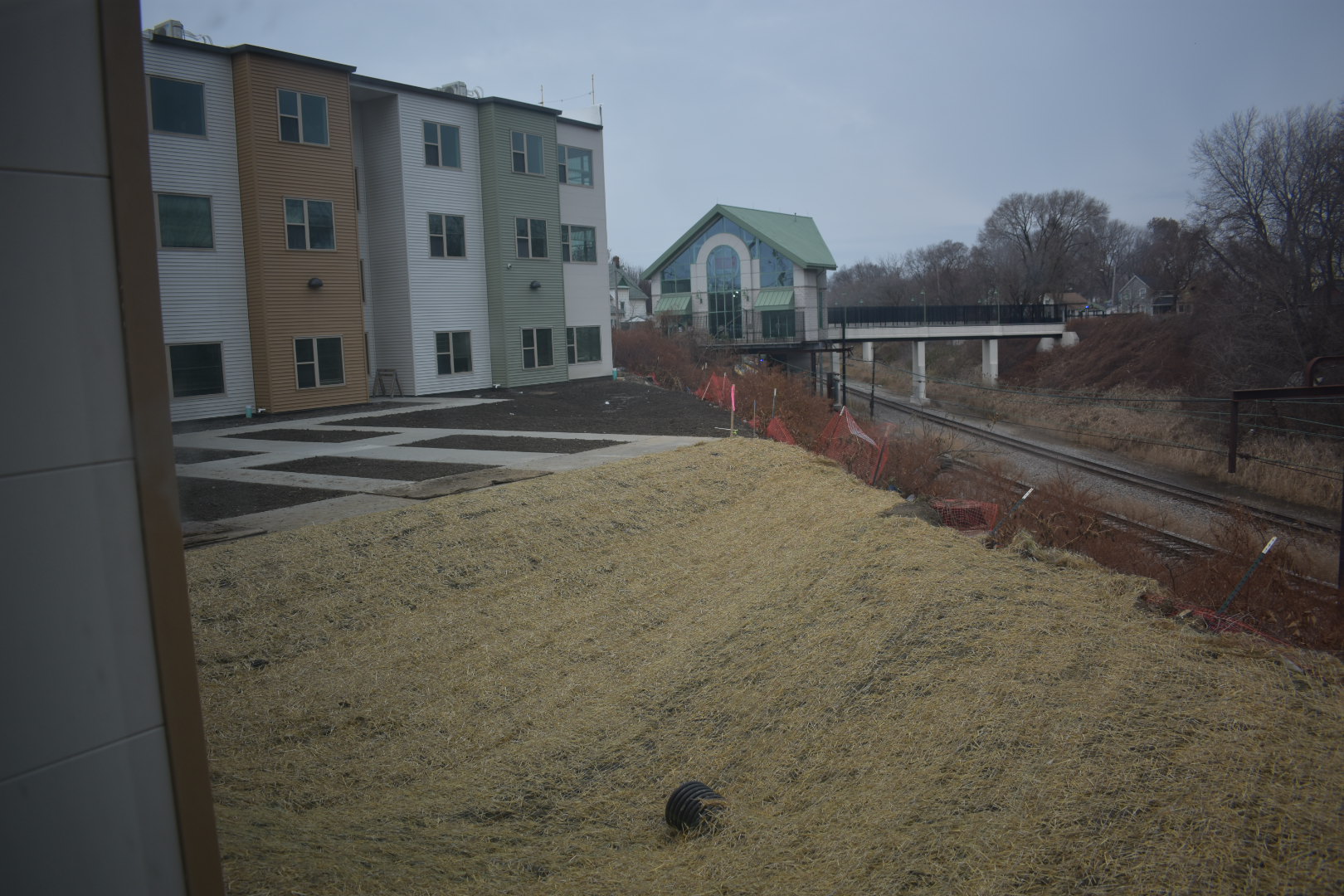Find an FAQ prepared by Greater Ohio as a recap for how investing may look in Opportunity Zones
GOPC Testifies before Governor's Advisory Committee on Transportation Infrastructure
Investments and improvements to our state’s transportation system have been a priority for GOPC since our founding. We want to draw the attention of this committee to one of the more underutilized methods that we have at our disposal to alleviating congestion and reducing the damage inflicted upon our roadways – public transportation.
Watch GOPC Call for Transit Funding on “The State of Ohio”
ODOT Data Shows some Improvement on Pedestrian Safety, More Progress Needed
2019 Summit Update: Early Bird registration Ends Jan 31st
Facing a Transportation Budget Shortfall, New Coalition Suggests Ohio Look at the Gas-Tax
Cleveland Transit awarded Grant for TOD Planning
Columbus Dispatch Shines Light on Ohio’s Reinvention Cities
The Columbus Dispatch gave front page coverage to Ohio’s smaller legacy cities this past Sunday. Two long-form articles reported on the innovative, creative, hard work that leaders in Marion, Springfield, Mansfield, Lima and other communities are carrying out to reinvent themselves.
The great divide: Many Ohio towns left behind despite strengthening economy
(The Dispatch, Dec. 16, 2018)
Struggling Ohio cities searching for ways to reinvent themselves
(The Dispatch, Dec. 16, 2018)
The paper highlighted the disparate economic performance between Columbus and many other parts of the state, while also telling stories that are less told: that mayors, chambers of commerce, nonprofits, philanthropy, and average citizens love these communities and are investing in them.
The Greater Ohio Policy Center’s research on the conditions in Ohio’s small and mid-sized legacy cities was featured, as was our work stewarding the Ohio Reinvention Cities Network.
The articles make clear: Ohio needs state policies that help these communities reinvent. Investing in the remediation of obsolete factories and buildings, increased resources for public transportation, and strategic technical assistance to communities that want to reinvent will support Ohio’s local change-makers, whose tenacity are building vibrant, economically competitive communities.
GOPC stands with Ohio’s legacy cities in calling on Governor-Elect DeWine and the General Assembly to authorize the policies and tools that they need to accelerate their path towards revitalized, reinvented communities.
Join us in building a Greater Ohio!
Gap-Financing Mechanisms for Downtown Revitalization in Small Cities
By John Collier, GOPC Manager of Research
Small legacy cities, especially in Ohio, are often home to unique and historic downtowns. Whether it be the ornate bank building on the corner or the quaint shops along the square, these urban cores are a huge asset to smaller communities. But as most residents can tell you, downtowns are also not the bustling centers of industry and commerce they once were. For decades, as suburban and exurban communities have grown – they have drawn away people and investment from the center city.
Research by Greater Ohio Policy Center has suggested that a regional focus on reinvesting in downtown can pay long-term dividends for the city and region as a whole. In weaker market cities, however, this is often much easier said than done. Development in the weak market downtowns of legacy cities is often risky and it can be hard to finance projects through traditional bank loans.
This dilemma was true even in a larger city like Cincinnati, until the Cincinnati Center City Development Corporation (3CDC) was founded in 2003 by a collaboration of corporate and city partners. This nonprofit development corporation, initially funded primarily with private capital, sought to facilitate economic development throughout Cincinnati’s urban core through real estate redevelopment. Since 2003, it has received national attention on the role it played in the revitalization of the Over-The-Rhine neighborhood. The transformation of this urban core neighborhood was made possible through heavy investment and subsidy by regional corporate leaders and the Cincinnati taxpayers.
Not every city or town is going to have the millions (if not billions) of dollars to replicate the success of Over-The-Rhine in their community – but the model still provides value for smaller communities.
Inspired by the success of Cincinnati’s efforts, however, Hamilton, OH saw an opportunity to adapt the 3CDC model to bring urban core revitalization to Downtown Hamilton. Thus, in 2012, the Hamilton CORE Fund was launched through a public-private partnership of the City of Hamilton, the Hamilton Community Foundation, and local lending institutions. In Hamilton, the fund provides financial resources for real estate projects within the city’s urban core.
Today, Hamilton’s CORE Fund engages in three different activates. First, it provides gap financing for large development projects undertaken in Hamilton’s urban core by private developers. Second, it purchases key underutilized commercial properties and works to repurpose them to their highest and best use. Third, CORE has begun to acquire historic residential properties and works with potential homeowners to renovate and occupy the homes.
The CORE fund has had tremendous success in continuing the strides being made in Hamilton. One of the larger successes the organization boasts is the redevelopment of 150 High Street, which was a 167,000 sqft building that is now home to a STARTEK call center, a diabetes center, a fresh food market, and an art studio. When fully operational, STARTEK will employ almost 700 people at its downtown location.
This model of real estate acquisition and gap financing for urban core projects exists in other communities across Ohio as well.
In Springfield, SpringForward was launched 2015 after the Springfield Foundation, Turner Foundation, Quinlan Trust, the Greater Springfield Chamber of Commerce, Springfield Regional Hospital, Speedway, the City of Springfield, and the Clark County Commission began meeting to decide what could be done to help revitalize downtown Springfield. Leaders in Springfield chose to model their effort closely after Hamilton’s CORE fund. Just like in Cincinnati and Hamilton, SpringForward provides financial support to revitalization efforts through low-interest loans, real estate acquisition and tax incentives. The organization is already midstream on a catalytic rehabilitation of a downtown building to create an artisan marketplace, shared kitchen, food hall, and event space for local businesses.
This model for targeted downtown reinvestment has also found a home in Piqua, a smaller city of only 20,000. Through private sector donations from individuals and businesses, the iPiqua Fund has raised approximately $1 million to accelerate redevelopment through targeted real estate investments.
Erie, Pennsylvania, a legacy city of 100,000 just 90 minutes east of Cleveland, recently created its own fund—the Erie Downtown Equity Fund. This $40 million fund has recently started deploying capital, including a $2.9 million purchase of a highly strategic block of buildings on Erie’s downtown Perry Square Park.
Programs such as these in Cincinnati, Hamilton, Springfield, Piqua and Erie are poised to become more popular as cities realize the potential waiting to be unleashed in their downtowns. Through this targeted, catalytic real estate redevelopment, cities can jumpstart or continue redevelopment – all in service of creating a place for people to live, gather, and do business.
Trailblazing partnership yields new TOD in Cleveland neighborhood
By Maria Walliser-Wejebe, GOPC Project Associate
There are several reasons to be excited over the rollout of Aspen Place, the new multifamily housing development that will bring future residents of the Detroit Shoreway neighborhood in Cleveland greater mobility options while maintaining affordability. Developed, owned, and operated by the Detroit Shoreway Community Development Organization, Aspen Place is an example of transit-oriented development which capitalized on neighborhood assets and took advantage of innovative partnerships.
In a trailblazing partnership, DSCDO and Greater Cleveland RTA have joined forces to make this project a reality: DSCDO purchased the development site from RTA; entered into a parking agreement with the authority, and are currently negotiating a per-unit purchase of RTA transit passes, one of the first between RTA and a residential property owner. While DSCDO has completed multiple development projects in the neighborhood, Aspen Place represents the DSCDO’s first investment on Lorain Avenue. The 100% affordable project will provide 40 units ranging from one to four bedrooms.
The project follows the model of Transit-Oriented Development, a growing trend in creating vibrant and sustainable communities which leverage access to high-quality transit. Located on Lorain Ave, Aspen Place is immediately adjacent to the RTA Red Line W. 65th Street Rapid Transit Station, and is serviced by the Lorain Avenue bus line. Aspen Place is also part of the Detroit Shoreway EcoVillage project, ensuring high standards in energy and water efficiency, indoor air quality, and accessibility, meeting Enterprise Green Communities criteria. The EcoVillage project also aims to provide environmentally conscious, pedestrian-friendly design in all new development.
The variety of transportation options adjacent to the site will reduce commuting costs and expand mobility options for the future residents of Aspen Place, making this TOD model especially impactful for seniors and working class families who might not be able to afford car ownership. Adjacency to transit also allowed the project to reduce the amount of parking spaces required for the development, a feat which would have proved impossible on the one-acre lot without reducing the total number of units. The additional partnership with GCRTA to provide passes for each of the units for the full term of low-income housing tax credit equity will provide true affordability for future residents by reducing the combined burden of housing and transportation costs on household budgets. Together with the fact that this project represents infill redevelopment on previously vacant land, Aspen Place is a perfect example of small-scale TOD in an urban neighborhood.
Aspen Place was financed through funding from Enterprise Community Partners, KeyBank, the Ohio Housing Finance Agency, the City of Cleveland, Cuyahoga County, and the Finance Fund. DSCDO hopes the development of Aspen Place will anchor revitalization efforts along Lorain Avenue, while providing options for long-term affordability in the neighborhood.
See current construction and shots of the apartment interiors in the gallery bellow. The grand opening of Aspen Place is scheduled for Spring of 2019, check the Detroit Shoreway CDO website for more info.





See GOPC six-part series Getting Ohio to Work: Reaching Opportunity through Public Transportation here. To read more about GOPC research and advocacy on the need for transit statewide, visit https://www.greaterohio.org/fueling-innovation/













